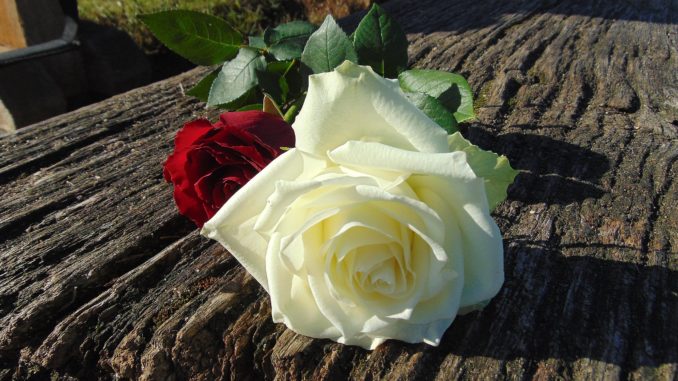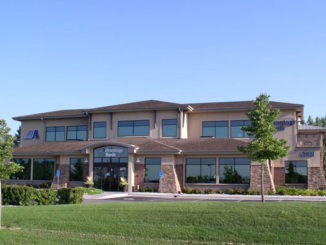
Kathleen Miller
Gaia’s Farm & Gardens
What do sustainable roses and cowboys have in common? For starters, they both are true to their own nature, resilient, strong and do not need to be pampered. Both tend to be long-lived and able to perform well for at least 10 years. Both are hardy and tough, able to survive and adapt under harsh conditions. The harsh conditions here in Northern Colorado, with the strong winds and intense freeze-thaw cycles, are a challenge to even the most seasoned of rose growers. However, there is one type of rose that always seems to emerge every June. Heirloom roses, which are grown on their own rootstock, blossom each June among old farms, ranches and homesteads radiating in their glory, and sometimes you might see a cowboy or two doing the same.

Most roses that are available commercially have been grafted. That means a single bud from a rose is grafted onto the stem of another seedling rose. The graft union where the two roses come together is the most cold-sensitive part of the plant. If it freezes, which it does frequently in Northern Colorado, the upper rose dies and only the root-stock will come up in the spring, not the rose you bought. A sustainable rose is an own-root rose where the entire plant grows from one stem. It can renew itself from the root if the stem gets damaged, diseased or too old. A rose is grown from a cutting and produces its own roots, then it can renew itself, possibly for a hundred years, staying true to itself. A sustainable rose has more resistance to cold, generally; produces more flowers because it has multiple stems coming from the root; and if it should die back to the ground or get cut off, the variety you bought will sprout from the root
“It used to be hard to find sustainable own-root roses, but they are becoming more common,” according to Matt Douglas, one of the owners of High Country Roses, an online-order, sustainable rose greenhouse in Arvada, Colorado. Matt states, “There is a definite movement towards own-root roses over the years.” He goes on to further explain, “Tea roses are shallow-rooted and tend to be field grown in tropical areas, grafted onto rootstock for ease of production for commercial sale.” High Country Roses has been growing and selling beautiful hardy, own-root roses for over 40 years. All of their roses are grown on their own roots, which means that they are grown directly from cuttings and not grafted onto a different rootstock. As a result, the roses tend to be hardier, they live longer, and they are guaranteed to always remain true to the variety you purchase. Some advice Matt gives to rose growers is, “You have to match the rose to the zone;a rose that is hardy to zone five or under will grow in Northern Colorado.”
Matt often recommends the Canadian varieties for their cold hardiness. Among some of his favorites are ‘Morden Sunrise’ and ‘Morden Fireglow’, for hardiness in the mountain west. Own-root roses have a higher success rate in Northern Colorado, and many of the old homesteads, farms and ranches still have heirloom varieties growing that were planted back when the cowboys roamed the range. They, like the cowboy, keep renewing themselves, staying true to their own nature. Own-root roses have increased vigor and bloom, and they live longer.
Just remember the difference between grafted and own-root roses when you are looking to purchase roses. Keep in mind that a bud union of a grafted rose is the most vulnerable spot to cold, and it can be easily damaged from our winters with such strong freeze-thaw cycles. Sustainable own-root roses can freeze all the way to the ground. Because they have their own root system, they come back as the same rose originally purchased. Sustainable own–root roses naturally send up shoots from the soil, which eventually creates a shapelier bush than a grafted rose. Sustainable roses are easier to maintain and their care is kinder to our Mother Earth.
Gaia Grows Tips for Growing Sustainable Roses
- Select the right rose for your climate
- Grow roses on their own roots
- Monitor your roses for initial signs of disease, and promptly remove infested parts before they have a chance to spread
- Mulch with 2 to 3 inches of compost to add nutrients to the soil and suppress weeds
- Use organic fertilizers such as fish emulsion or composted animal manures
- Spray with jets of water to control aphids or mildew
- Try alternative products like horticultural oil and insecticidal soap to control insects and diseases
- Fall pruning and cleanup to prevent fungal diseases from overwintering on canes
- Don’t use broad-based or full spectrum insecticides, which kill good bugs as well as bad
- Don’t spray with chemicals
- DON’T keep problem roses around. Remove them and replant with disease-resistant varieties instead
Sustainable living, gardening and farming is based on an understanding of ecosystems, the study of relationships between organisms and their environment. It has been defined as an integrated system of plant and animal production practices that will last over time. Having a harmonious relationship with Gaia (Mother Earth) provides food for people, enhances the natural environment upon which the community depends, makes efficient use of resources and integrates natural cycles that sustain economic viability as well as enhances the quality of life for the community as a whole.
Support Northern Colorado Journalism
Show your support for North Forty News by helping us produce more content. It's a kind and simple gesture that will help us continue to bring more content to you.
BONUS - Donors get a link in their receipt to sign up for our once-per-week instant text messaging alert. Get your e-copy of North Forty News the moment it is released!
Click to Donate




1 Trackback / Pingback
Comments are closed.